
Butter beans -- or lima beans, as they are also known -- freeze well as long as you take measures to protect their texture and retain food safety while you prepare them. Blanching or undercooking butter beans before you freeze them prevents them from becoming mushy when you thaw and cook the frozen beans. It is also vital to quick-cool the beans before you package them to minimize the time they spend in the temperature "danger zone" between 40 and 140 degrees Fahrenheit -- the temperature range in which illness-causing bacteria grow rapidly.
Seasonings and Additional Ingredients
Video of the Day

Freezing alters the flavors of many herbs and spices; reserve seasonings to add to the beans when you reheat them. Boiling butter beans with other vegetables, such as carrots and celery, for flavoring is safe. But freezing alters the flavor of onion, so avoid it when possible. Limit animal-based fats, such as bacon or ham hock, in cooked bean dishes. Animal fat turns rancid after several months in the freezer and shortens the freezer life of the beans.
Video of the Day
Quick-Cool the Beans for Safety
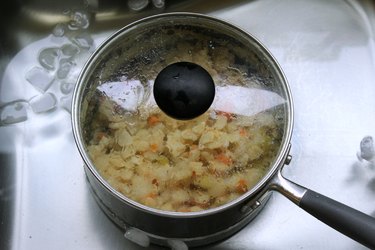
Quick-cool a pot of blanched or cooked butter beans in a sink of ice water to reduce their temperature to 40 F, as measured by a food thermometer. Replace the ice as it melts. Do not cool the beans in a refrigerator or freezer. The warmth from the still-hot beans will raise the temperature of the refrigerator or freezer, compromising the food safety and quality of all your other food.
Package Single Portions
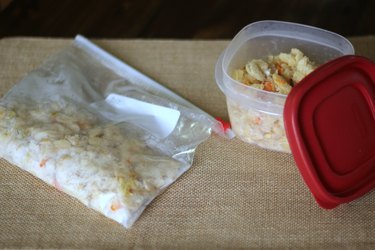
Package blanched or cooked butter beans in moisture-vapor-resistant materials intended for long-term freezer storage. Rigid plastic containers and resealable plastic freezer bags are the most effective options. Most people prefer rigid containers for foods that have a liquid component or sauce, since rigid containers are less likely to leak. Divide the beans into small, single-meal-size portions. The quality of thawed frozen beans declines more rapidly than that of fresh beans.
Fresh or Dry Butter Beans
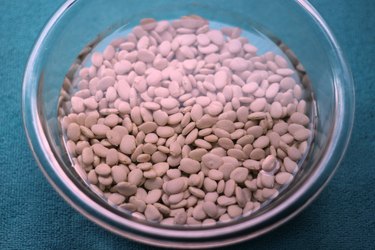
Shell fresh butter beans and discard damaged pieces; soak dry butter beans for 24 hours. Blanch fresh or soaked beans in boiling water for 3 minutes. Quick-cool the pot of beans, then drain them. Package blanched butter beans in a freezer-safe plastic container or resealable bag. Leave a half-inch of head space between the top of the beans and the rim or seal of the storage vessel. Store below 0 F for 8 to 12 months.
Butter Beans Cooked with Additional Ingredients
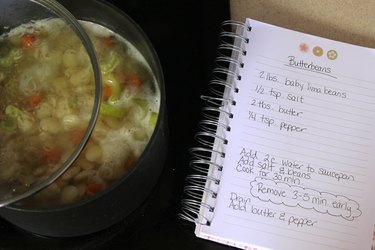
Soak dried butter beans for 24 hours; shell fresh beans. Cook the beans according to your recipe, but remove the dish from the heat 3 to 5 minutes before the beans reach the desired level of tenderness. Quick-cool the dish. Package the food in rigid freezer-safe containers, leaving a half-inch of head space. Store the beans below 0 F. Freeze butter bean soups, side dishes or salads that do not contain meat or dairy for 8 to 12 months. Freeze butter bean dishes that do contain meat or dairy products up to 6 months.
Thawing and Cooking Frozen Butter Beans
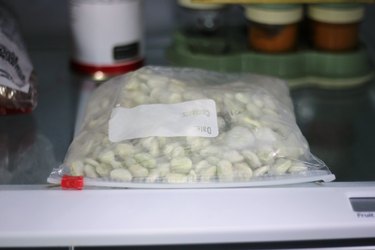
Thaw the beans in the refrigerator or cook them straight from the freezer. It is safe to reheat or finish cooking the beans in the microwave or on the stove, depending on your recipe. Stir frozen beans frequently as they thaw and cook to ensure even reheating.